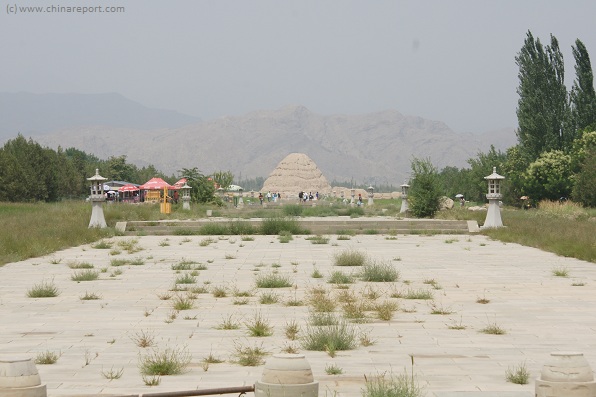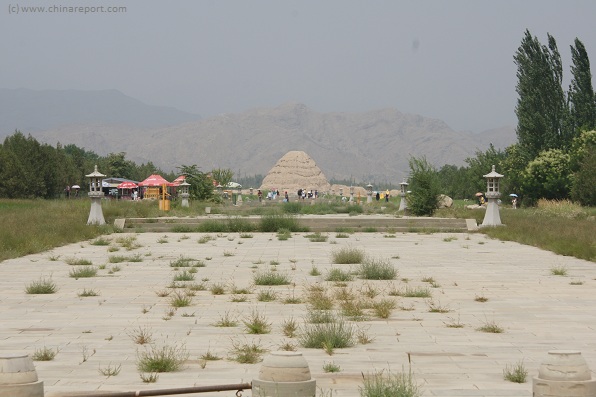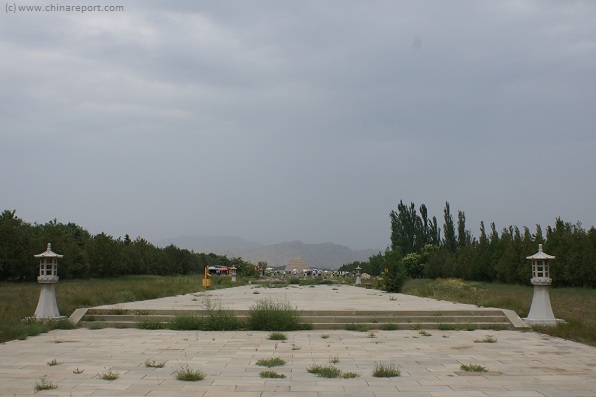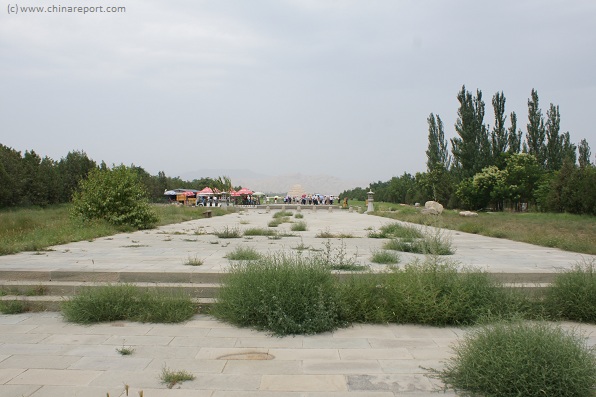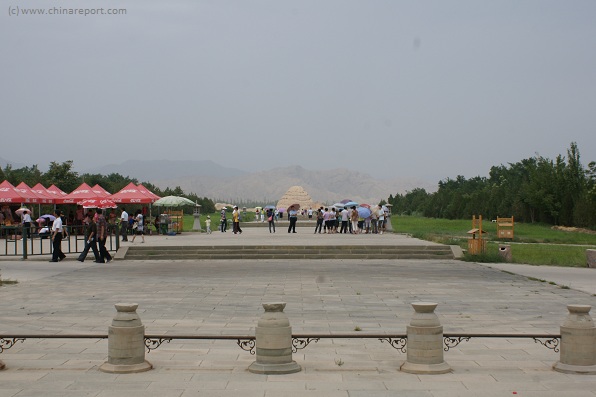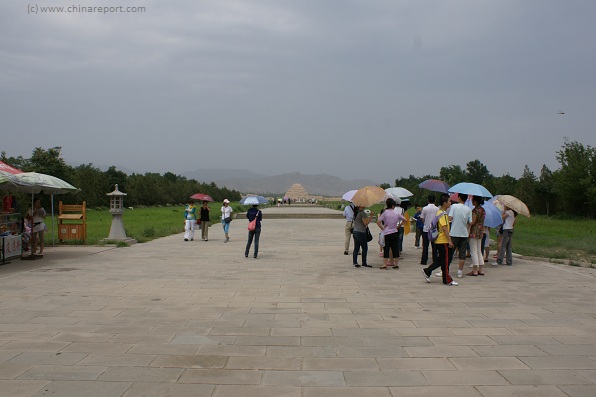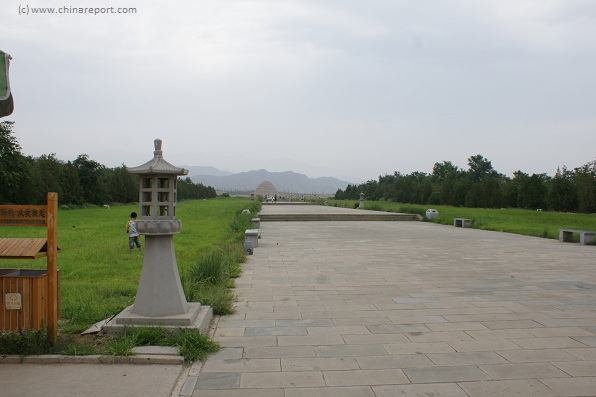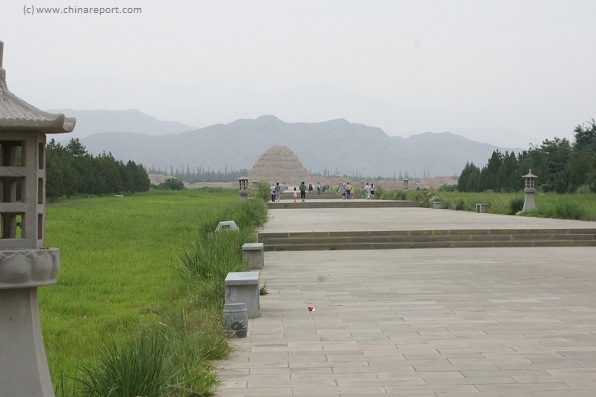HISTORY OF XIXIA WANLING - TANGUT ROYAL TOMBS:
The Western Xia imperial tombs were discovered by accident during the construction of a military air field in 1972. The soldiers were digging at the site in order to lay foundations when they found a dozen pieces of old pottery and some bricks. With the help of archaeologists from the Ningxia Museum, the ancient tombs were finally unearthed.
The relics included mural paintings, delicate handicrafts, ancient pottery, and bricks covered in square designs. After careful tests and research, the archaeologists ascertained that the tombs belonged to the emperors of the 11th century Western Xia regime, and the words on the bricks were actually Western Xia (Tangut) characters. The Tanguts had their own script.
Detailed investigations and research on the tombs have been carried out ever since. So far only one imperial tomb has been uncovered, as well as four coffin chambers and stone-tablet pavilions. Other relics found on site include sculptures, coins and pottery which revealed a historical record written in Western Xia characters and paintings depicting scenes of the the Western Xia people's nomadic lifestyle. The uniquely-shaped stone carvings and clay sculptures, rare finds from this short-lived ancient Empire have also provided archaeology experts with additional sources for clues about this ancient and nearly lost civilization.
ARCHITECTURE OF THE LI YUANHAO TOMB AT XIXIA WANLING:
Each of the tombs is a complete and more or less preserved architectural complex. The halls above the ground are mostly destroyed and ruined in ruins however the mourning platforms and sacred walls remain largely intact.
The earth platform in the west of the site was for sacrificial offerings. Behind it is an eye catching mausoleum platform, which today has eroded down into an earthen pile with a remnant height of 23 meters (about 75.44 fee). Originally however the pile stood as a five to seven storied solid eight-sided pagoda, an unique architectural design for mausoleum Tombs in the history of these Regions.
Between the sacrifice palace and mausoleum platform lies earth ridge, under which is corridor leads to the tomb chamber, the so called underground palace.
Although floodings regularly came down from Helan Shan during heavy rains the area of the West Xia Imperial Tombs was left untouched during their 1000 year history. So far 8 or 9 stone kneeling statues with sticking teeth, glower and plump breast with an unknown significance and function were unearthed at the site. Full excavations have yet to be performed.
The Western Xia Imperial Tombs are situated in the western suburb of Yinchuan to the east of Helan Mountain. Complete the grounds stretch 4.5 kilometers from east to west, and 10 kilometers south to north, covering an area of 50 square kilometers. Altogether, so far nine imperial tombs have been
